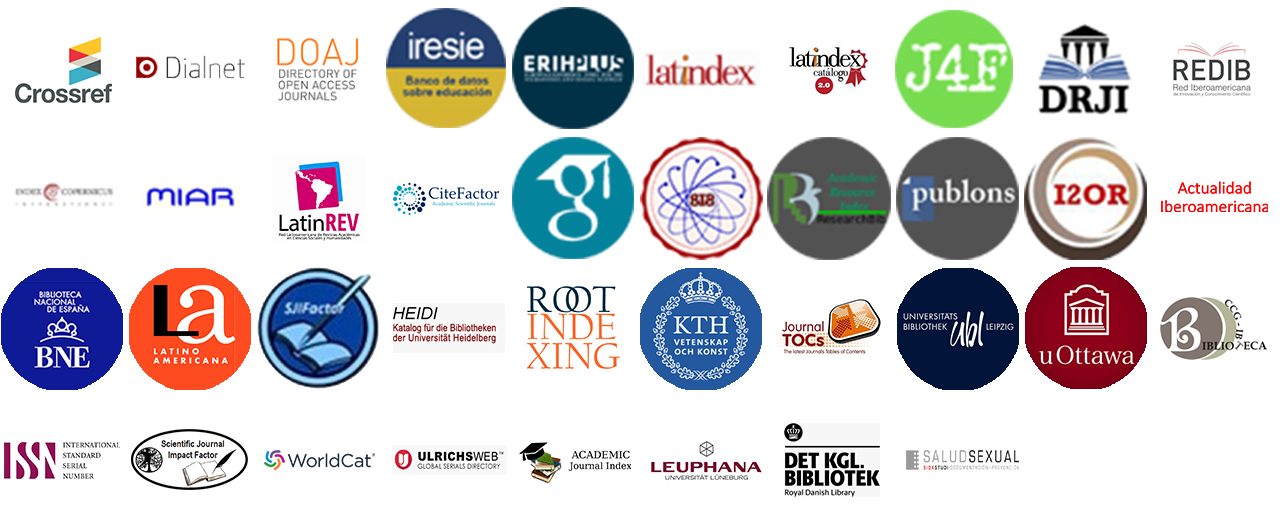OpenStack: an alternative Infrastructure as a Service for institutions of higher education
DOI:
https://doi.org/10.36825/RITI.08.15.001Keywords:
Cloud Computing, OpenStack, Open Source, IaaS, IESAbstract
This document presents the advantages of using a private cloud of Infrastructure as a Service, using the OpenStack technology for Institutions of Higher Education of the Tecnologico Nacional de Mexico in the state of Oaxaca. The analysis of the research results consulted in the academic databases such as: EBSCO, Latindex, Redalyc, Dialnet and Scielo, show the importance of cloud computing in higher education institutions, since this type of technology allows the use of a more efficient way of computing infrastructure existing in the institution and also the rapid implementation of new information systems, in addition to the private cloud through OpenStack, has advantages over other IaaS Open source technologies, such as : cost, documentation, ease of implementation, and services offered. OpenStack provides the possibilities of implementing private IaaS clouds in a distributed way, thus allowing collaborative work between higher education institutions in the country or abroad in favor of academic improvement.
References
Sosinsky, B. (2010). Cloud Computing Bible. Indianapolis, Indiana: Wiley Publishing.
Mell, P., Grance, T. (2011). The NIST definition of cloud computing. Recuperado de: https://nvlpubs.nist.gov/nistpubs/Legacy/SP/nistspecialpublication800-145.pdf
Basha, S., Dhavachelvanm, P. (2011). Survey on E-Business Models. International Journal of Engineering Science and Technology (IJEST), 3 (5), 3631–3639.
Al-Zoube, M. (2009). E-Learning on the Cloud. International Arab Journal of e-Technology, 1 (2), 58-64.
Kurose, J. F., Ross, K. W. (2007). Computer networking: a top down approach. 4th Edition. USA: Addison Wesley.
Doelitzscher, F., Sulistio, A., Reich, C., Kuijs, H., Wolf, D. (2011). Private cloud for collaboration and e-Learning services: From IaaS to SaaS. Computing, 91, 23-42. doi: 10.1007/s00607-010-0106-z
Odun-Ayo, I., Oladimeji, T., Odede, B. (2018). Cloud computing economics: Issues and developments. Trabajo presentado en Conference: The International MultiConference of Engineers and Computer Scientists, Hong, Kong.
Sefraoui, O., Aissaoui, M., Eleuldj, M. (2012). OpenStack: Toward an Open-source Solution for Cloud Computing. International Journal Computer Applications, 55 (3), 38–42. doi: 10.5120/8738-2991
Craig-Wood, K. (2013). Open source as the secure alternative: A case study. Computer Fraud & Security, 2013 (2), 15-20. doi: https://doi.org/10.1016/S1361-3723(13)70021-6
Teixeira, J. (2014). Developing a cloud computing platform for Big Data: The OpenStack Nova case. Trabajo presentado en IEEE International Conference on Big Data, Washington, DC, USA. doi: 10.1109/BigData.2014.7004496
Rocha, L., Vazquez, A. (2014). Benefits of adoption of Cloud Computing in Mexico. Ecorfan Jorunal, 5 (12), 2043-2056.
Jain, P., Datt, A., Goel, A., Gupta, S. C. (2016). Cloud service orchestration based architecture of OpenStack Nova and Swift. Trabajo presentado en International Conference on Advances in Computing, Communications and Informatics (ICACCI), Jaipur, India. doi: 10.1109/ICACCI.2016.7732425
Ding, W., Gu, C., Luo, F., Chang, Y. (2018). Construction and performance analysis of unified storage cloud platform based on OpenStack with Ceph RBD. Trabajo presentado en 3rd IEEE International Conference on Cloud Computing and Big Data Analysis (ICCCBDA), Chengdu, China.
Intel. (2011). OpenStack: Open Source Software for Building Private and Public Clouds. Recuperado de: https://www.intel.com/content/dam/www/public/us/en/documents/solution-briefs/openstack-open-source-building-clouds-brief.pdf
Cañenguez Serbino, D. M., Chicas Villegas, R. W., Megía García., F. J., Navarrete, B. A. (2017). Creación de una infraestructura de alta disponibilidad reutilizando hardware a través de OpenStack. Trabajo presentado en X Congreso de Computación Para El Desarrollo (COMPDES), San Carlos de Guatemala. Recuperado de: http://www.compdes.org/compdes2017/docs/LibroCompdes2017.pdf
Urueña, A., Ferrari, A., Blanco, D., Valdecasa, E. (2012). Cloud Computing - Retos y Oportunidades. España: ONTSI.
Rackspace Support. (2017). Understanding the Cloud Computing Stack SaaS, Paas, IaaS. Recuperado de: https://support.rackspace.com/how-to/understanding-the-cloud-computing-stack-saas-paas-iaas/
Lugo Cardozo, N. E. (2014). Tecnologías de virtualización en los sistemas informáticos de las organizaciones empresariales del estado Zulia. Télématique: Revista Electrónica de Estudios Telemáticos, 13 (2), 49-67. Recuperado de: https://dialnet.unirioja.es/servlet/articulo?codigo=5157975
Bhatia, G., Al Noutaki, I., Al Ruzeiqi, S., Al Maskari, J. (2018). Design and implementation of private cloud for higher education using OpenStack. Trabajo presentado en Majan International Conference (MIC), Muscat Oman.
Souza Couto, R., Sadok, H., Cruz, P., da Silva, F. F., Sciammarella, T., Campista, M., M. K. Costa, L. H., Braconnot Velloso, P., Goncalves Rubinstein, M. (2018). Building an IaaS cloud with droplets: a collaborative experience with OpenStack. Journal of Network and Computer Applications, 117, 59–71.
Vásquez-Bermúdez, M., Hidalgo, J., Avilés-Vera, M. P. (2017). Servicio de nube para la comunidad académica de la carrera de computación e informática de la universidad agraria del ecuador. Revista de Investigación en Tecnologías de Investigación (RITI), 5 (10), 1-6.
Published
How to Cite
Issue
Section
License
Copyright (c) 2020 Revista de Investigación en Tecnologías de la Información

This work is licensed under a Creative Commons Attribution-NonCommercial-NoDerivatives 4.0 International License.
Esta revista proporciona un acceso abierto a su contenido, basado en el principio de que ofrecer al público un acceso libre a las investigaciones ayuda a un mayor intercambio global del conocimiento.
El texto publicado en la Revista de Investigación en Tecnologías de la Información (RITI) se distribuye bajo la licencia Creative Commons (CC BY-NC
 ), que permite a terceros utilizar lo publicado citando a los autores del trabajo y a RITI, pero sin hacer uso del material con propósitos comerciales.
), que permite a terceros utilizar lo publicado citando a los autores del trabajo y a RITI, pero sin hacer uso del material con propósitos comerciales.



